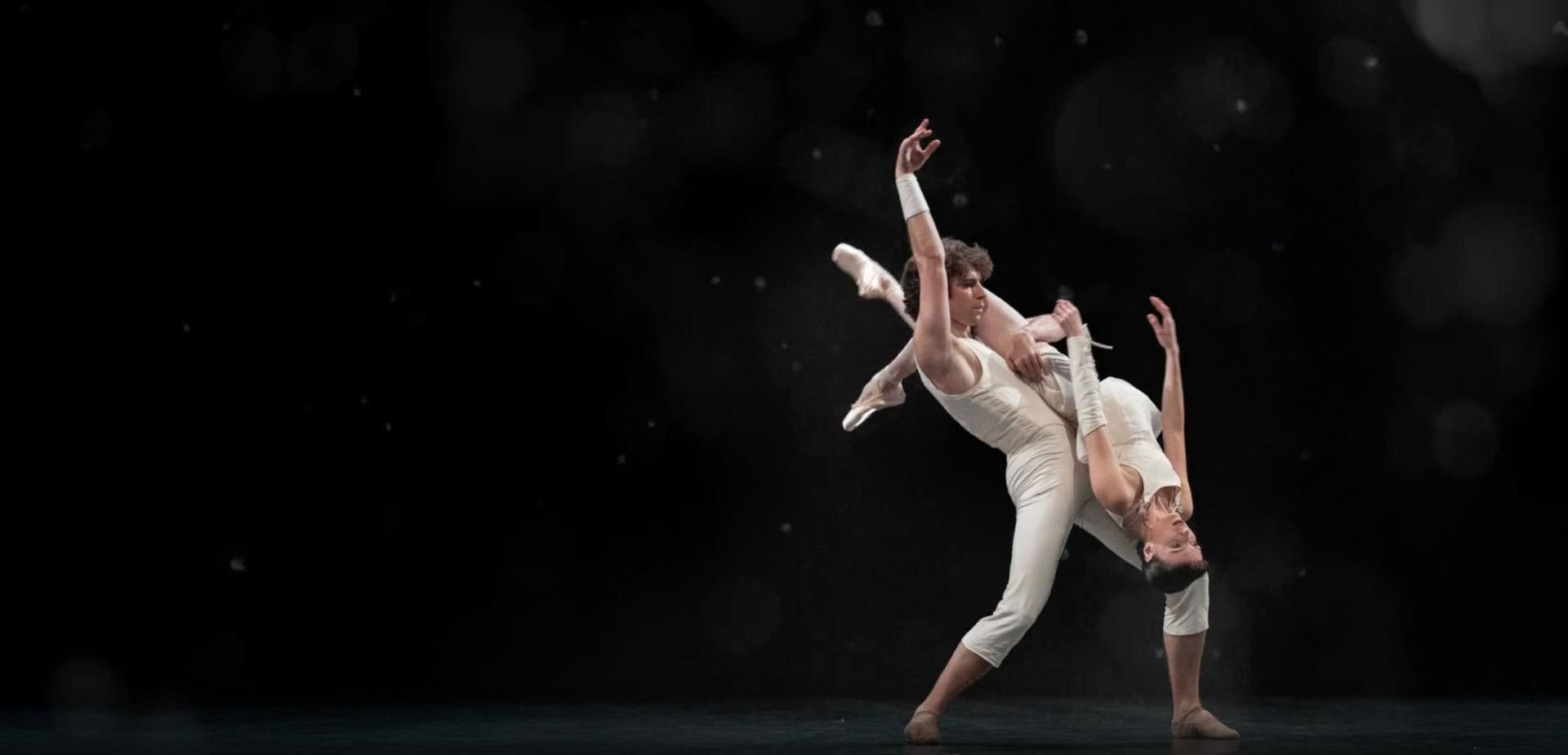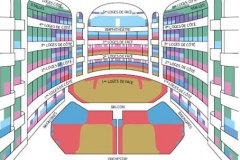Contrasts Ballet
December 2025 | ||||||
|---|---|---|---|---|---|---|
Mo | Tu | We | Th | Fr | Sa | Su |
Contrasts – Trisha Brown / David Dawson / Imre, Marne van Opstal | Ballet
Duration : 2h25 with 2 intervals
This programme entitled Contrasts opens with two pieces by Trisha Brown. O złożony / O composite, created in 2004 for the Paris Opera Ballet, was an opportunity for the Company to experiment with “post-modern dance”.
With this season’s addition to the repertoire of If you couldn’t see me, a solo danced back to the audience, the Opera is reinforcing its link with the emblematic New York avant‑garde choreographer, who died in 2017.
In Anima Animus, British choreographer David Dawson not only explores the masculine and the feminine, but also plays on the contrasts between technical virtuosity and lyrical poetry whilst employing classical vocabulary.
Finally, Imre and Marne van Opstal, brother and sister from the Netherlands, present their first work for the Paris Opera: Drift Wood. The symbol of driftwood, representing resilience, adaptability and abandonment, also reminds us of the beauty of nature and the passage of time.
Program and cast
O złożony / O composite
Creative team
Trisha Brown - Choreography
Laurie Anderson - Music(1947)
Vija Celmins - Set design
Jennifer Tipton - Lighting design
If you couldn’t see me
Entry to the repertoire
Creative team
Trisha Brown - Choreography
Robert Rauschenberg - Music
Robert Rauschenberg - Set, costume and lighting design
Spencer Brown - Lighting design
Anima Animus
Entry to the repertoire
Creative team
David Dawson - Choreography
Ezio Bosso - Music(1971‑2020)
John Otto - Set design
Yumiko Takeshima - Costume design
James F. Ingalls - Lighting design
Drift wood
Creation
Creative team
Imre van Opstal - Choreography
Marne van Opstal - Choreography
Amos Ben-Tal - Music(1979)
Salvador Breed - Sound creation
Imre van Opstal - Set design
Tom Visser - Lighting design
With the Paris Opera Étoiles, Premières Danseuses, Premiers Danseurs and Corps de Ballet
Recorded music
Duration : 2h25 with 2 intervals
Opening
First part - 30 min
Intermission - 20 min
Second part - 35 min
Intermission - 20 min
Third part - 40 min
End
Paris Opera Palace Garnier
RM Europa Ticket GmbH is an officially accredited ticket reseller of/by Opera National de Paris.
Agency number: 4848428
The Paris Opera (French: Opéra de Paris, or simply the Opéra) is the primary opera company of Paris. It was founded in 1669 by Louis XIV as the Académie d'Opéra and shortly thereafter was placed under the leadership of Jean-Baptiste Lully and renamed the Académie Royale de Musique. Classical ballet as we know it today arose within the Paris Opera as the Paris Opera Ballet and has remained an integral and important part of the company. Currently called the Opéra national de Paris, it primarily produces operas at its modern 2700-seat theatre Opéra Bastille which opened in 1989, and ballets and some classical operas at the older 1970-seat Palais Garnier which opened in 1875. Small scale and contemporary works are also staged in the 500-seat Amphitheatre under the Opéra Bastille.
The company's annual budget is in the order of 200 million euros, of which 100 million come from the French state and 70 million from box office receipts. With this money, the company runs the two houses and supports a large permanent staff, which includes the orchestra of 170, a chorus of 110 and the corps de ballet of 150
Each year, the Opéra presents about 380 performances of opera, ballet and other concerts, to a total audience of about 800,000 people (of which 17% come from abroad), which is a very good average seat occupancy rate of 94%In the 2012/13 season, the Opéra presents 18 opera titles (two in a double bill), 13 ballets, 5 symphonic concerts and two vocal recitals, plus 15 other programmes. The company's training bodies are also active, with 7 concerts from the Atelier Lyrique and 4 programmes from the École de Danse.
The Palais Garnier is a 1,979-seat opera house, which was built from 1861 to 1875 for the Paris Opera. It was originally called the Salle des Capucines because of its location on the Boulevard des Capucines in the 9th arrondissement of Paris, but soon became known as the Palais Garnier in recognition of its opulence and its architect, Charles Garnier. The theatre is also often referred to as the Opéra Garnier, and historically was known as the Opéra de Paris or simply the Opéra, as it was the primary home of the Paris Opera and its associated Paris Opera Ballet until 1989, when the Opéra Bastille opened at the Place de la Bastille. The Paris Opera now mainly uses the Palais Garnier for ballet.
The Palais Garnier is "probably the most famous opera house in the world, a symbol of Paris like Notre Dame Cathedral, the Louvre, or the Sacré Coeur Basilica." This is at least partly due to its use as the setting for Gaston Leroux's 1910 novel The Phantom of the Opera and, especially, the novel's subsequent adaptations in films and Andrew Lloyd Webber's popular 1986 musical. Another contributing factor is that among the buildings constructed in Paris during the Second Empire, besides being the most expensive, it has been described as the only one that is "unquestionably a masterpiece of the first rank." This opinion is far from unanimous however: the 20th-century French architect Le Corbusier once described it as "a lying art" and contended that the "Garnier movement is a décor of the grave".
The Palais Garnier also houses the Bibliothèque-Musée de l'Opéra de Paris (Paris Opera Library-Museum). Although the Library-Museum is no longer managed by the Opera and is part of the Bibliothèque nationale de France, the museum is included in unaccompanied tours of the Palais Garnier.

 EN
EN DE
DE IT
IT FR
FR ES
ES RU
RU JP
JP RO
RO
 Seating plan
Seating plan 